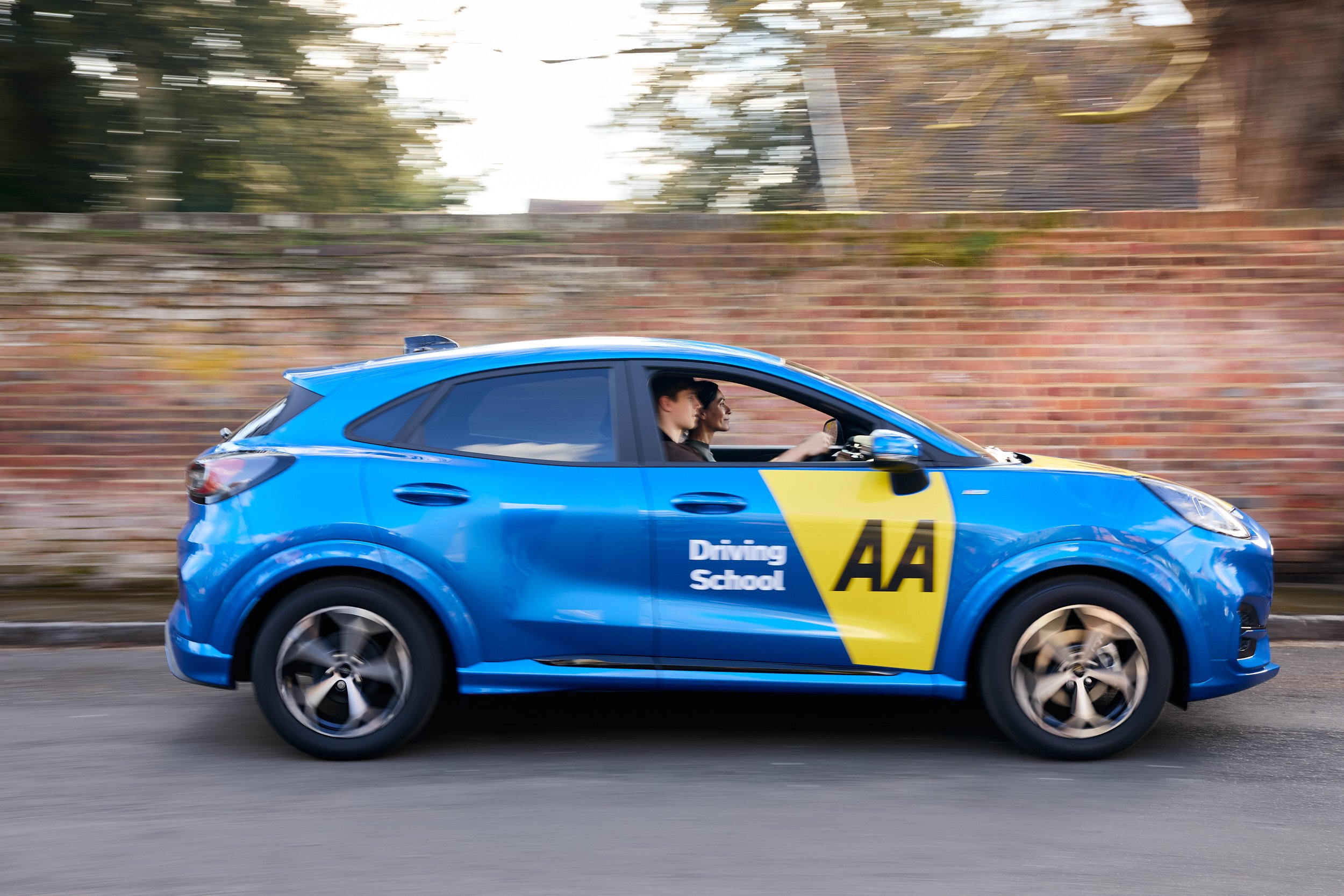During everyday driving, you never know when you might have to stop suddenly. Doing so safely and retaining control of the car is vital, so it’s a good thing to practise. Plus you may have to perform an emergency stop on your driving test if the examiner requests it.
Despite sounding a little severe, you should get the hang of it pretty quickly, and be able to emergency stop safely and on-demand soon enough.

In this article:
- What is an emergency top, and how do I do it?
- Will I have to perform an emergency stop on my driving test?
- How to do a test-standard emergency stop
What is an emergency stop and how do I do it?
By and large, drivers who are aware of their surroundings and conditions should be able to anticipate potentially hazardous situations. This limits the need for hard braking.
But if hazards present themselves unexpectedly, it may be necessary to brake hard, and not skid or lose control. If you're unsure about your stopping distances, read up on them in this article.
You perform an emergency stop as follows:
- If you’re driving a car with an Anti-lock Braking System (ABS), you press the clutch and brake pedals at the same time. ABS is there to stop the wheels from locking, which makes you less likely to skid. It also means you retain better control of your steering.
- If you’re driving an older car without ABS, you press the brake first and press down on the clutch at the last moment before stopping. Pressing the clutch too early increases the risk of coasting.
If you take your driving test in your instructor’s car, they will almost certainly have ABS. As such, the first method is what you’ll use on your test.
| Back to top |
Will I have to perform an emergency stop on my driving test?
An emergency stop is one of the manoeuvres which you might be asked to perform on your driving test. There’s a one in three chance that you’ll be asked to perform a controlled stop, otherwise known as an emergency stop.
The manoeuvres you have to perform are chosen at random by the examiner, and you won’t be told at the beginning of the test which they’ll be. The examiner will inform you in good time though.
You’ll be asked to pull over. When you’ve come to a stop, put the car in neutral and apply the handbrake. The examiner will then tell you that you’ll be expected to perform an emergency stop shortly. They’ll instruct you that they’ll raise their hand and say “STOP”, simulating a situation where this action would be required.
After receiving your instructions, you’ll be asked to drive off again. Continue driving as normal until you’re given the signal to stop.
You might notice the examiner checking their mirror before doing this, as it’s their responsibility to ensure it’s safe to perform the stop. Although this means you won’t be expected to check your mirror before applying the brake, it’s good practice to regularly check your mirrors so you know what’s going on around you.
| Back to top |
How to do a test-standard emergency stop
The examiner will be looking for the following:
- Speed: You need to act quickly and decisively when they issue the instruction to stop.
- Control: You need to maintain control of the vehicle during the manoeuvre. Keep both hands firmly on the wheel. You may pick up faults if you swerve, skid or coast.
- Checks and observations: After you’ve come to a stop, put the car in neutral and apply the handbrake. Before re-joining traffic, you should perform a complete all-around check to ensure it’s safe to do so. Check your windows and mirrors, and don’t forget your blind spots.
Please note that stalling while performing the emergency stop is common and won’t necessarily cause you to be marked down. It’s losing control that you want to avoid. If you do stall, just restart the engine as normal before performing your checks.
In a real-life emergency stop situation, it’s better to apply the clutch in time and not stall. This is because you might have to move away again quickly, and stalling will cost you time.
| Back to top |
